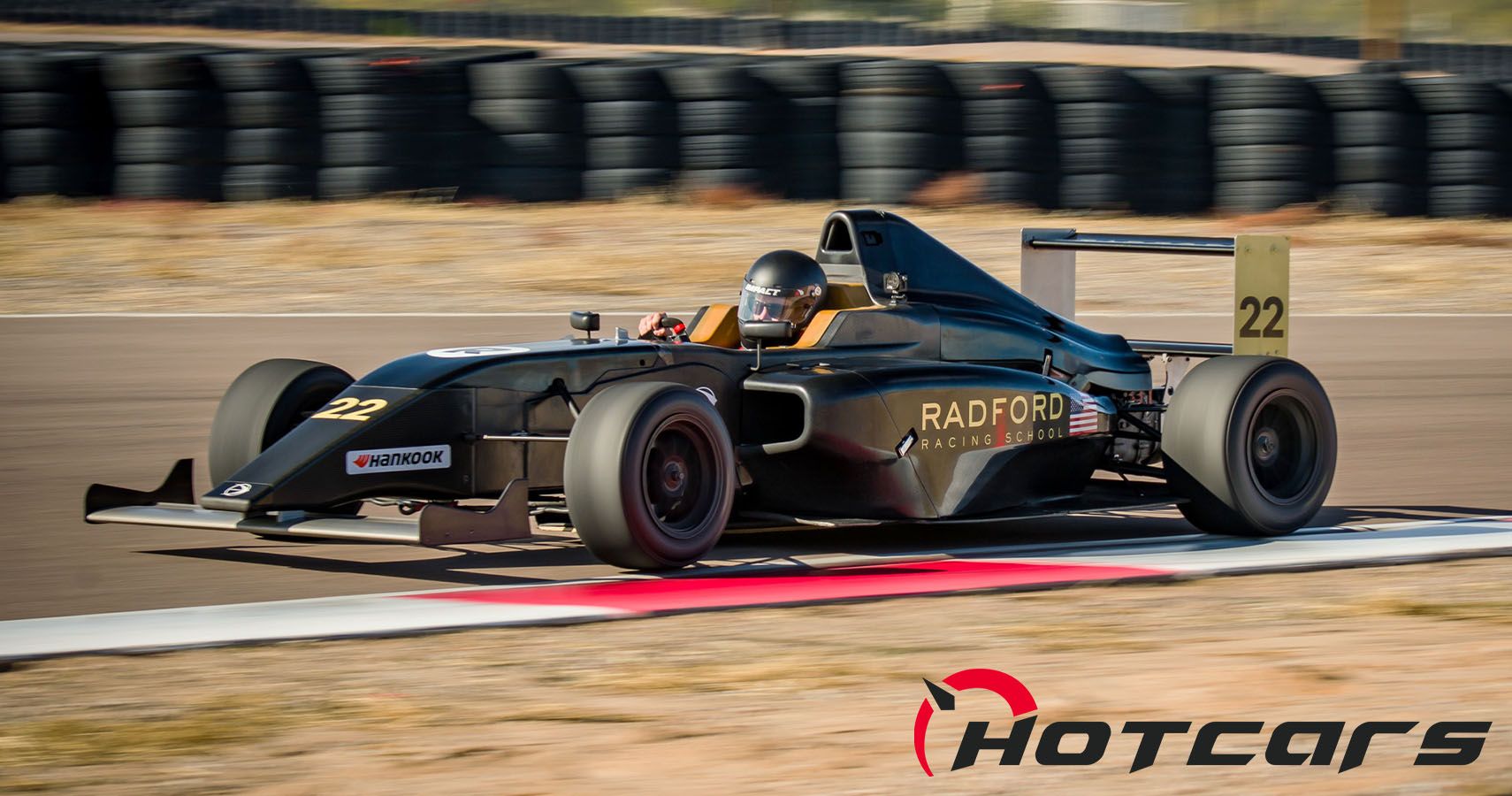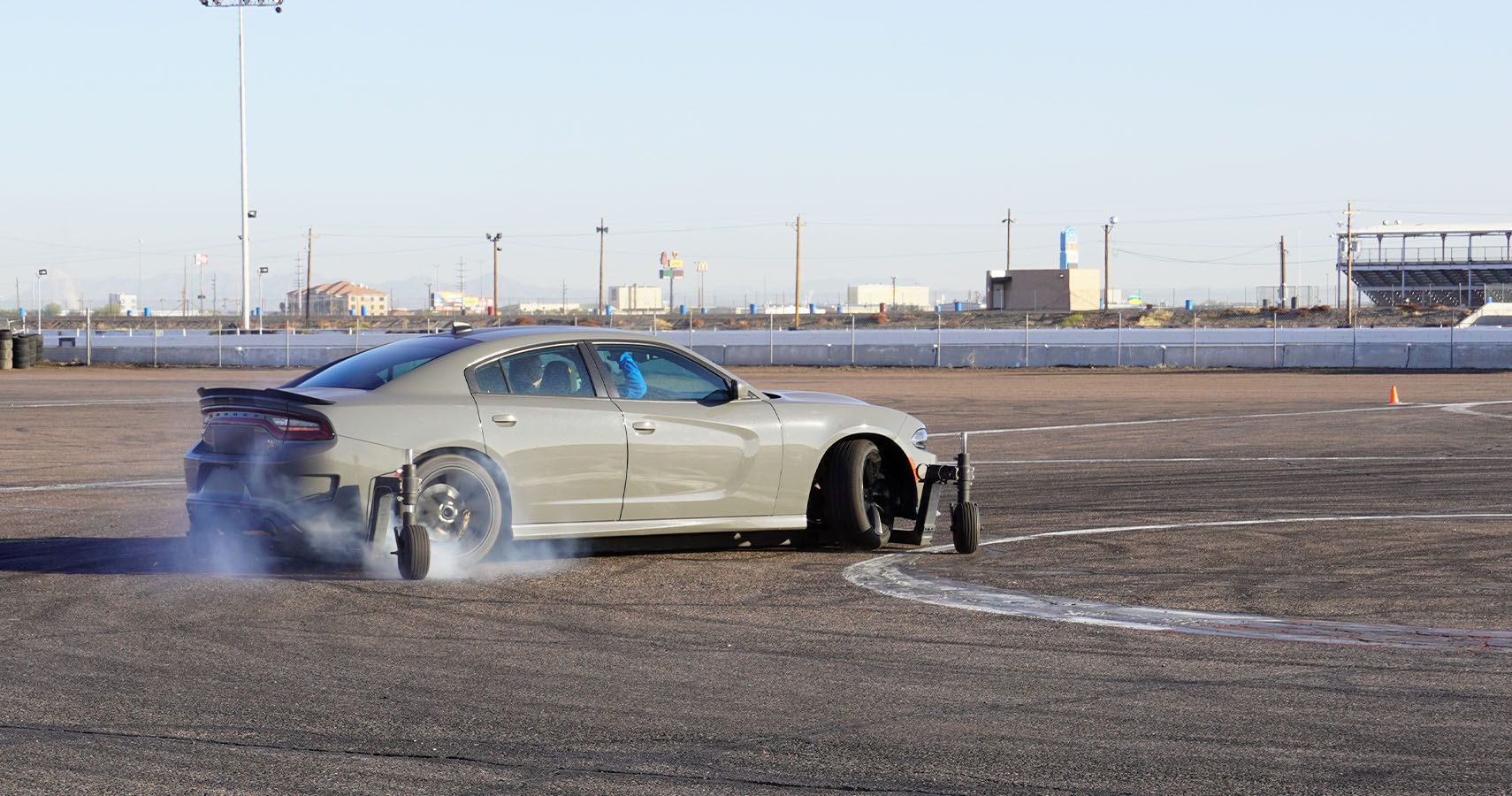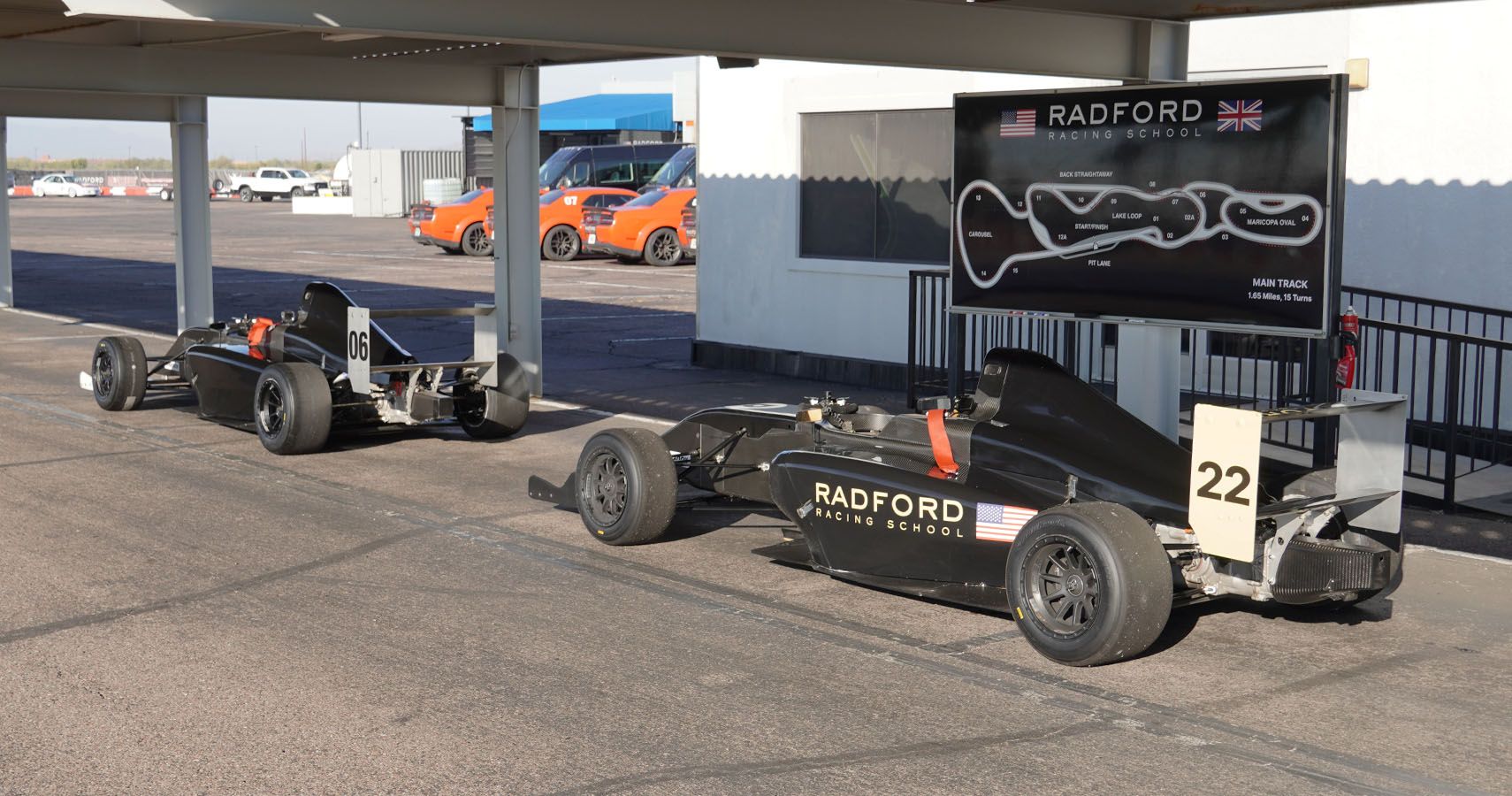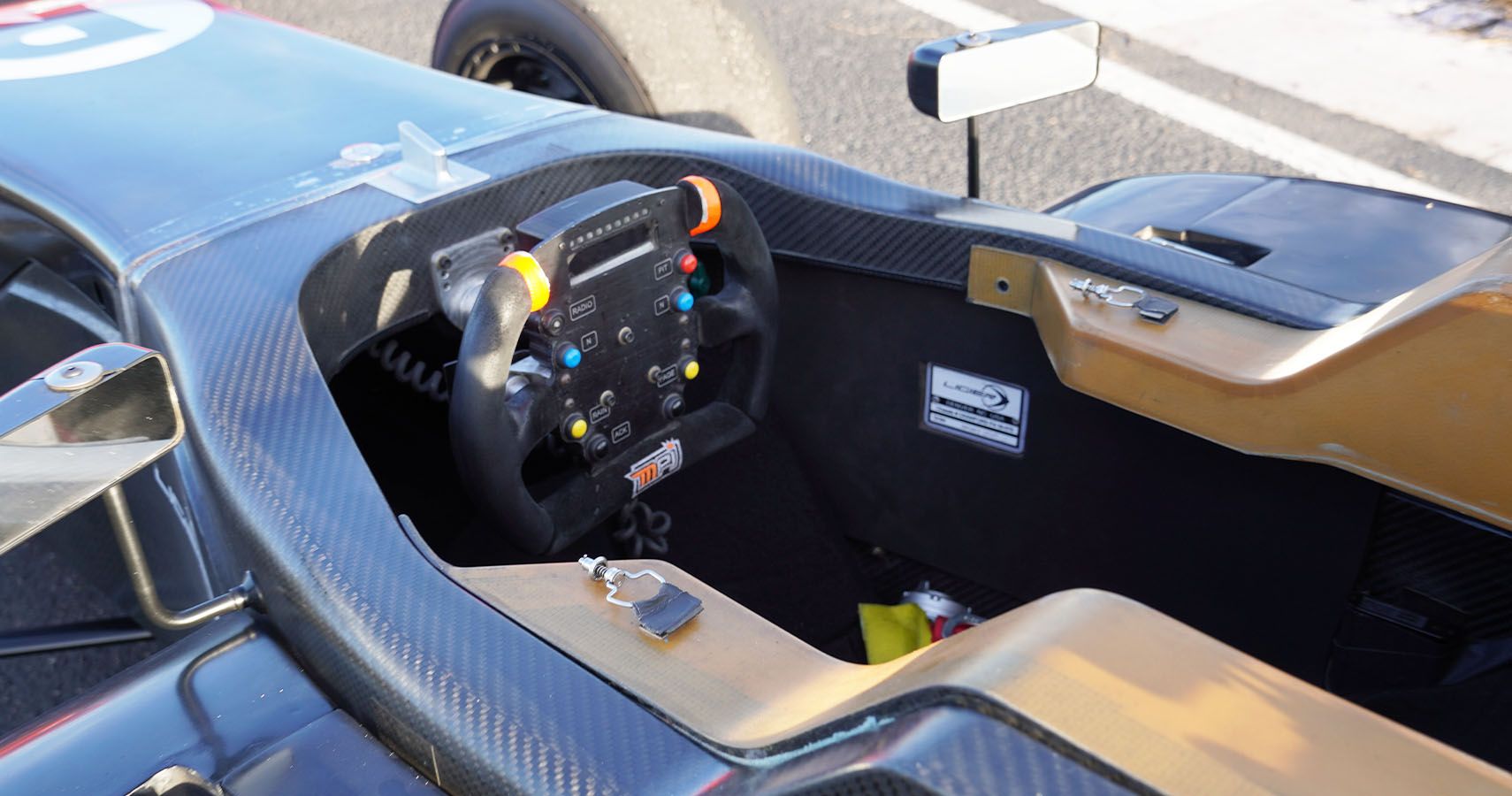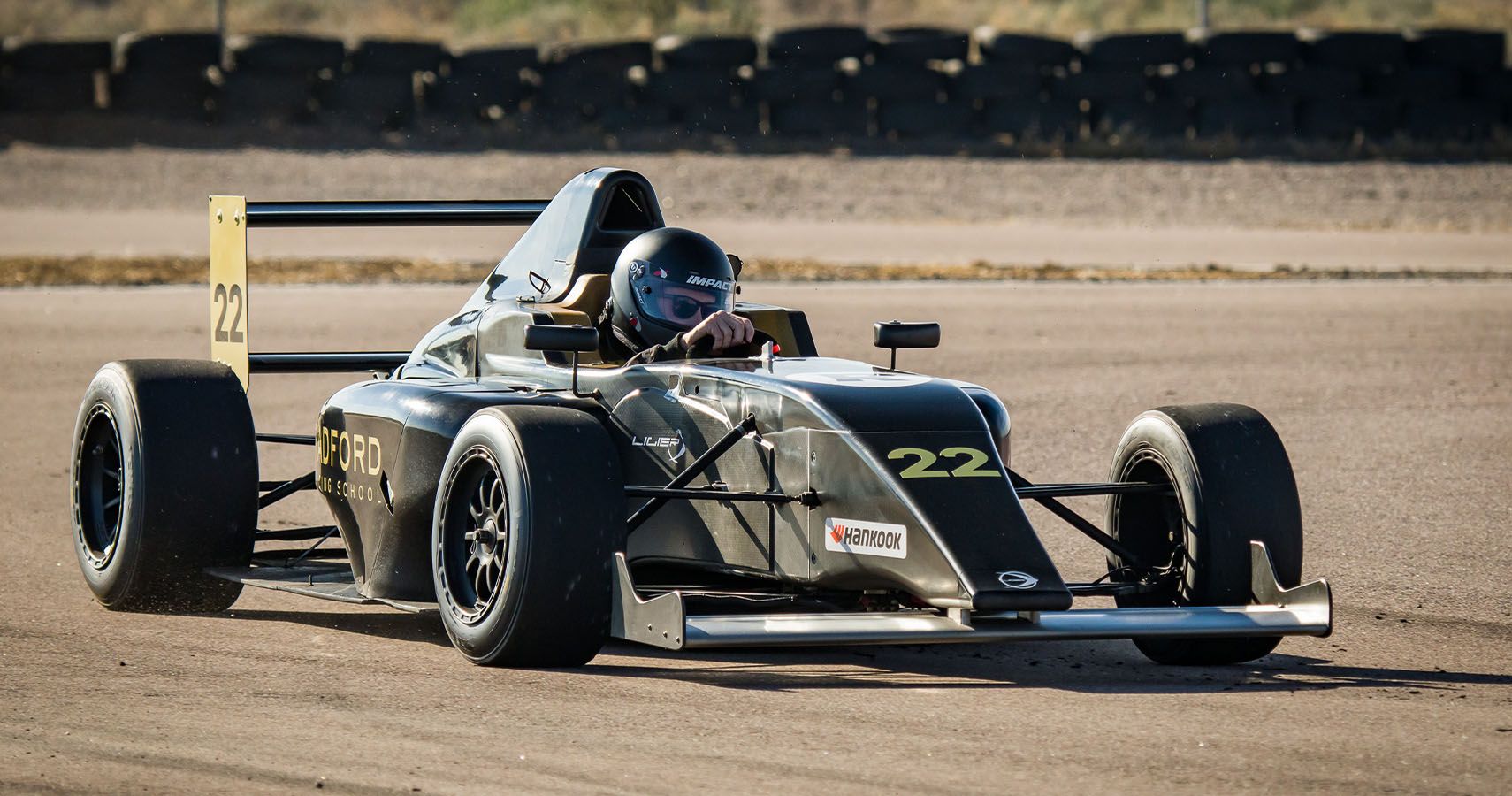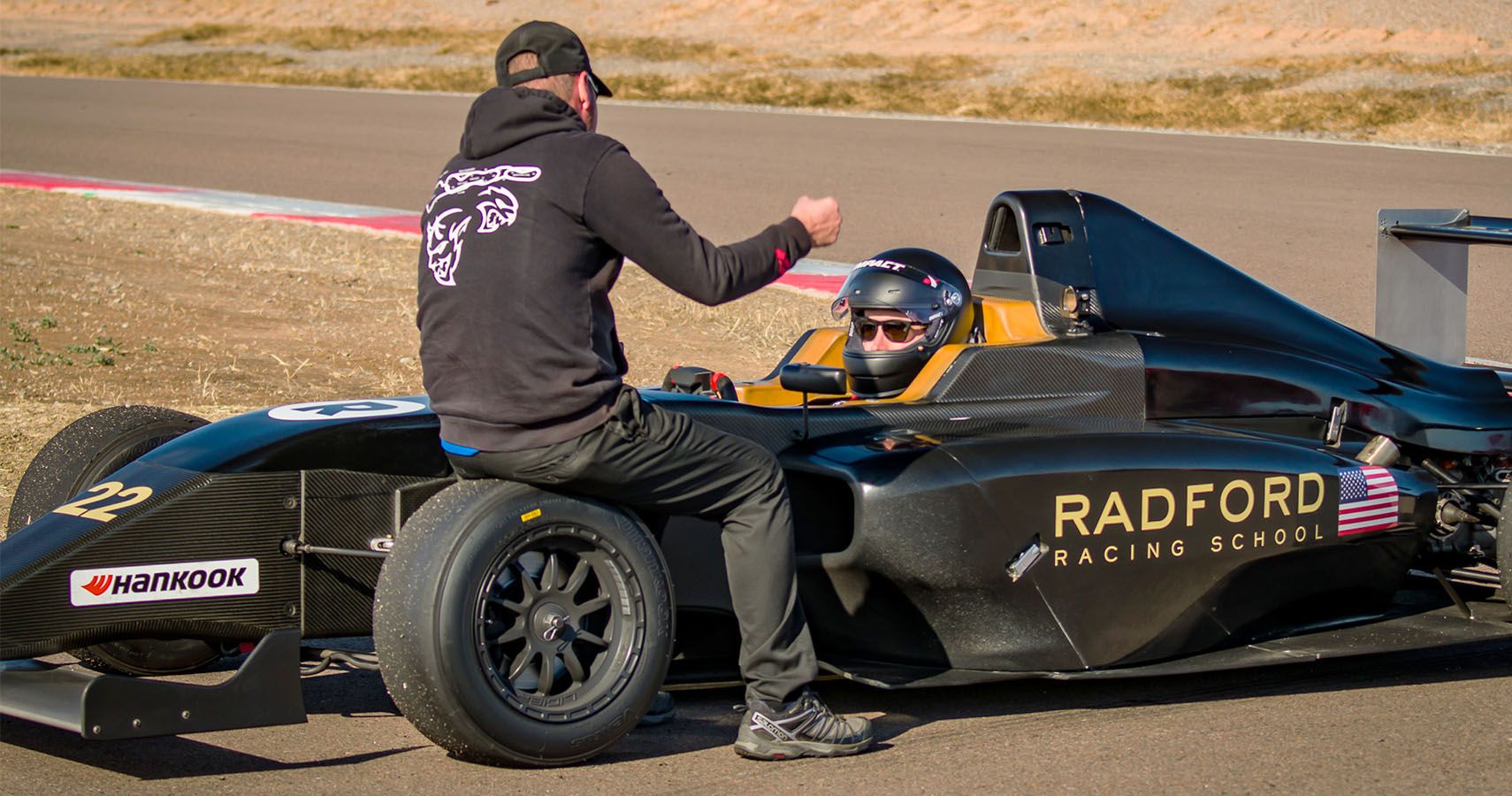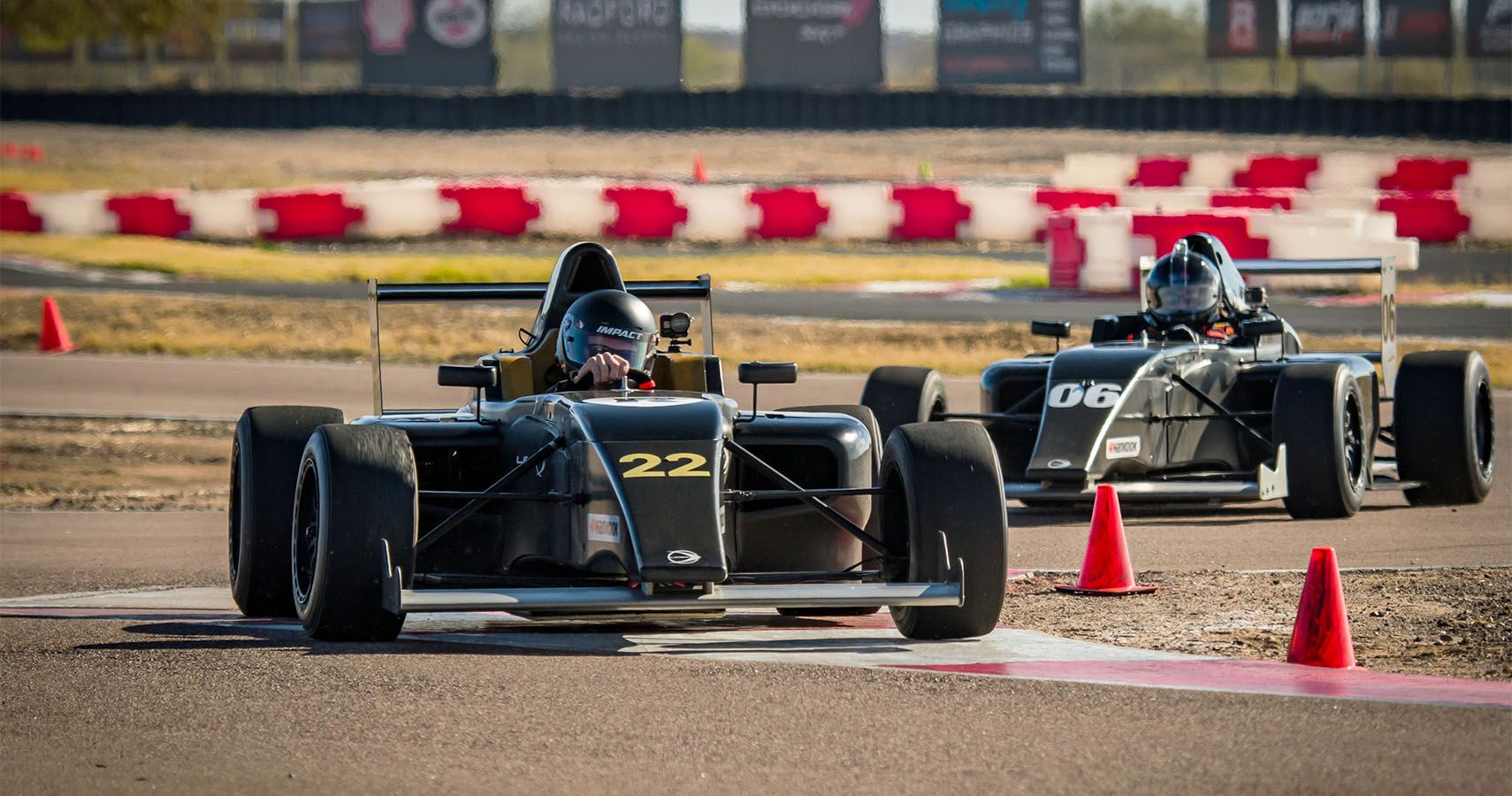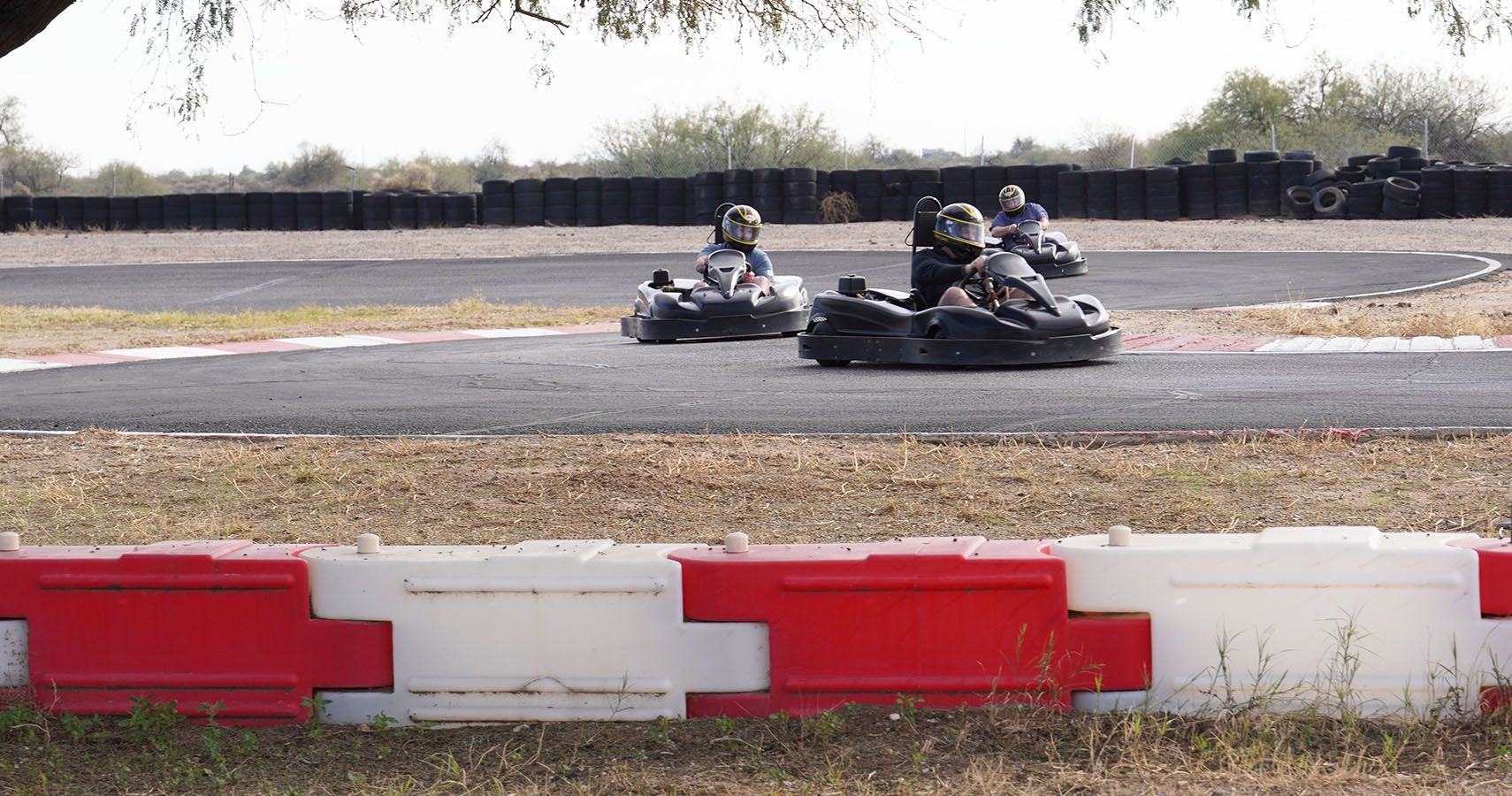After three full days of drills, exercises, classroom sessions, and hot laps at Radford Racing School, everyone from the instructors to the students and even the office staff seemed anxiously ready for the real action on Day 4. I walked in that morning feeling confident and well-rested, but still aware that my brain needed to process a lot of information leading up to a day behind the wheel of a full-blown Ligier F4 open-wheeled racecar.
Even just the fitting session on Wednesday hinted at the hardcore nature of the task at hand, as two of the three students at Radford's signature four-day Grand Prix road racing course would get to live out their Lewis Hamilton, Max Verstappen, Michael Schumacher or, in my case, Teo Fabi dreams during a day we all knew we would never forget.
Comprehending The Task At Hand
While we climbed into and out of the F4 cars the previous day, our main instructor, Will Parker, tried to explain the importance of keeping our knees in the right place, our feet braced on the heel sills, and our shoulders clear of any restraint. These Ligier F4 cars use absolutely zero driver's aids, designed instead to transition teenage hopefuls from racing shifter karts to real racecars with much more power, pneumatic air-actuated paddle shifters, and inboard suspension. Forget power steering, ABS, assisted brakes, or traction control of any kind—time to grow up and go racing.
More Practice On The Skid Pad
But first, Radford wanted us to get another taste of car control at the limits of oversteer, so we headed back to the skidpad for a quick session in the Chargers equipped with outboard training wheels. A few more donuts, a few more figure-eights, and another discussion about the importance of our vision while driving, then to the classroom for a primer on the difference between driving an F4 car compared to the Challengers, Vipers, and Lotus that made up the previous three days.
Parker specifically advised us not to go hunting for the limit of the Ligier's traction during hard cornering or acceleration—in the past, students apparently argued that they needed at least one spin to understand how far to push. The mid-engined layout of an F4 car may make them a bit more prone to oversteer, like the Evora GT as compared to the balanced Hellcat Widebody or the Viper's understeer, but the whole purpose of the previous lessons came into stark contrast when I remembered that the damage waiver I signed on Day 1 did not apply to my steed on Day 4. Apparently, they cost about $100,000 for all the carbon fiber, suspension components, the 2.0-liter Honda motor, and the Sadev six-speed sequential gearbox.
Ligiers Lined Up
At the pits, two Ligiers sat waiting for us (our third classmate drove his Challenger during our breaks all day) and somehow, outside the shop where we got fitted, they seemed even smaller. Parker walked us around again to familiarize ourselves anew with the 1,250-pound cars, a paltry figure that makes "only" 160 horsepower sound a whole lot more significant. Then we once again went through the process of climbing in, fire suits on, getting comfortable, strapping down tight, and firing up our engines.
Firing Up The Formula 4 Racecars
The tiny, cramped cockpit feels even smaller than it looks with leg pads shoved on both sides, fire suit and gloves on, plus a helmet equipped with the HANS restraint system. Three pedals down in the scrunched nose include a clutch, only used to start the engine and begin rolling in first gear. Then, paddle shifters on the removable steering wheel control the sequential air-shifted gearbox. A couple of switches and buttons to the left of the steering wheel, plus a few pumps of the clutch to make sure the clutch switch engages, and the engine roars to life. And believe you me, even with a helmet on, the little Honda four-banger ROARS with no mufflers to restrict the exhaust flow.
Slow First Laps Around The Maricopa Oval
I stalled on my first start and had to walk myself through the firing-up sequence again. But then I got the hang of applying light throttle while slowly releasing the clutch pedal. We began by driving down to the Maricopa Oval once more for some shakedown laps—a very good idea because the entire sensory experience of these F4 cars borders on full mind and body overload.
Tight, harsh, and loud, the F4 cars demand more focus and far more strength than any of the street-legal cars we warmed up on. The tires also take longer to warm up, the weight transfers much less perceptibly due to less suspension compression, and in many ways, the entire drive feels much less forgiving. At the same time, though, being true racecars, they can also mask mistakes, as I learned while slowly acclimating to the almost overwhelming rush of new sensations.
A Welcome Coaching Break
By three or four laps around the oval, my shoulders began screaming, forearms cramping, back drenched in sweat thanks to the sheer physical exertion (and wool base layer beneath the fire suit). When Parker pulled us in for a quick coaching session, I welcomed the opportunity just to catch my breath. The break felt as much for the body as to remind us of how much our exercises over the past three days would serve us well in these purpose-built racecars.
Then, we headed out to the larger track, with Parker out front leading in his Challenger, pushing the big muscle car to the absolute limit for a few laps before requiring a cool-down to keep the brakes from fading on him. This figured as the first time I remembered hearing a Radford employee mention a weakness in the Challengers, which that up til then proven themselves handily—then again, comparing any street-legal vehicle to an F4 car simply isn't fair and braking a 4,470-pound muscle car creates a ton of heat.
My fellow F4 driver and I took turns behind Parker, following his full-gas racing line and feeling the aerodynamic benefits on the straights. The downforce I first experienced about 24 hours earlier in the Viper now seemed like a joke, since in the F4 car I could physically feel air buffeting my helmet when in the wake of the car ahead of me. We ratcheted up the pace steadily, heeding Parker's admonitions not to get too close to his bumper since he, quite literally, would not be able to see us in his rearview. Swatting the paddles, beginning to feel the weight transfer, standing on the brakes, I began to get more comfortable in this brave new world.
Onto The Full Track
Eventually, my body adjusted to the strain and I noticed that I began driving—not by any conscious decision—with my elbows in and forearms more vertical, taking strain off the deltoids and using more big muscle movements in the pecs, traps, and lats. No wonder F1 drivers stay in such good shape (and not just cardio, of which my cyclist lifestyle provides plenty). I felt myself wishing I used a heart rate monitor.
Lessons from the Challenger, Viper, and Lotus did flit through my mind: planting the nose, compressing the tires, holding out wide, and finding full throttle immediately.
But in many ways, the F4 experience departs entirely from those cars and, truly, anything else I'd ever driven. So light and nimble, I could punch the unassisted brakes with all my strength and not hit any ABS chatter, push higher speeds through wider turns and feel the downforce keeping those wheels planted, and roll onto the throttle much easier and earlier. Then BANG, shift, BANG, shift, BANG, shift, and all of a sudden the straightaway wraps up fast back into the chicanes of Turn 1.
I skittered out the rear end a few times, with a quick hit of opposite steering like we learned on the skid pad, but never pushed past the limit much more. And sure, we spent the day chasing Parker in his Challenger, which helped keep our baser impulses from running wild. The Ligier's tiny dash display didn't include a speedometer but this day wasn't about top speed, rather finding the true line of Bob Bondurant's training circuit. To a certain extent, I enjoyed sitting in third place, letting the two cars ahead get a little lead, watching and then improving on their line to catch up.
We took a steady stream of breaks throughout the afternoon, keeping an eye on the sun progressing across the Arizona sky but by the end of the day, the sad truth that all good times must end reared up once more. What a day, one for the memoirs, in the zone, in the flow, working hard in the name of focus and fun.
Bonus Karting Laps
I got another treat about fifteen water bottles later, after waving goodbye to my fellow classmates who left for home that evening, when Chief Instructor Danny Bullock brought me out to Radford's smaller go-kart track, which occupies most of the big circuit's infield. We climbed into a couple of concession karts—not shifter karts, which Radford will host but doesn't stock a fleet of currently—to spend a quick 20 minutes blasting and bumping around. Bullock mostly taught me lesson after lesson, as I got used to a whole new form of driving, but all the learnings from big muscle cars to legit F4 racers over four days at Radford shone through once more. And I got to add sore ribs to my bruised knees and forearms, raw shoulders, and tight neck.
Every ache and pain that night in the hotel felt worth their weight in gold, reminders of a peak life experience. To an extent, driving a Ligier ruined all other cars for me, leaving me once again determined to find that Lotus Exige sitting right on the ragged edge where racing and the comforts of daily drivability converge. I sat there in the hotel, depleted and chugging more water, curious how drag racing Dodge Demons might feel the next morning on my last day at Radford Racing School.
Sources: ligierautomotive.com, youtube.com, radfordracingschool.com, hansdevice.com,

